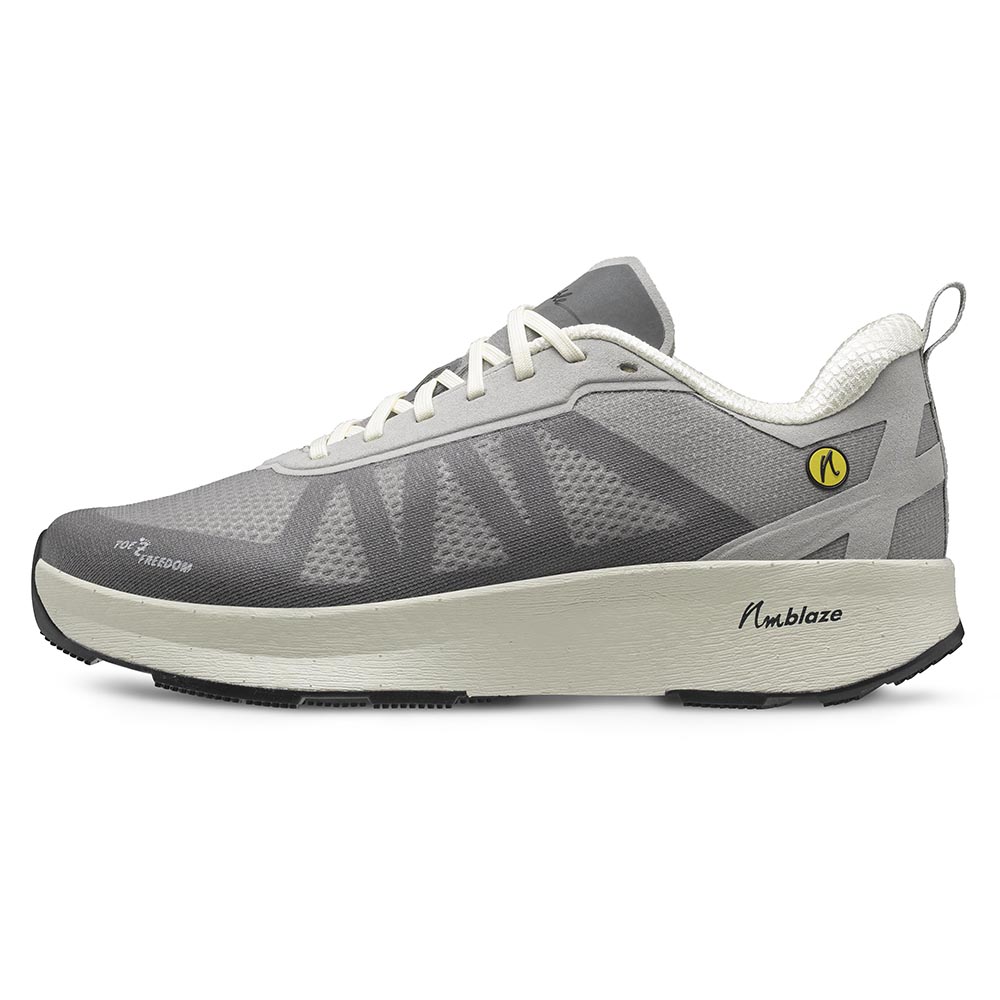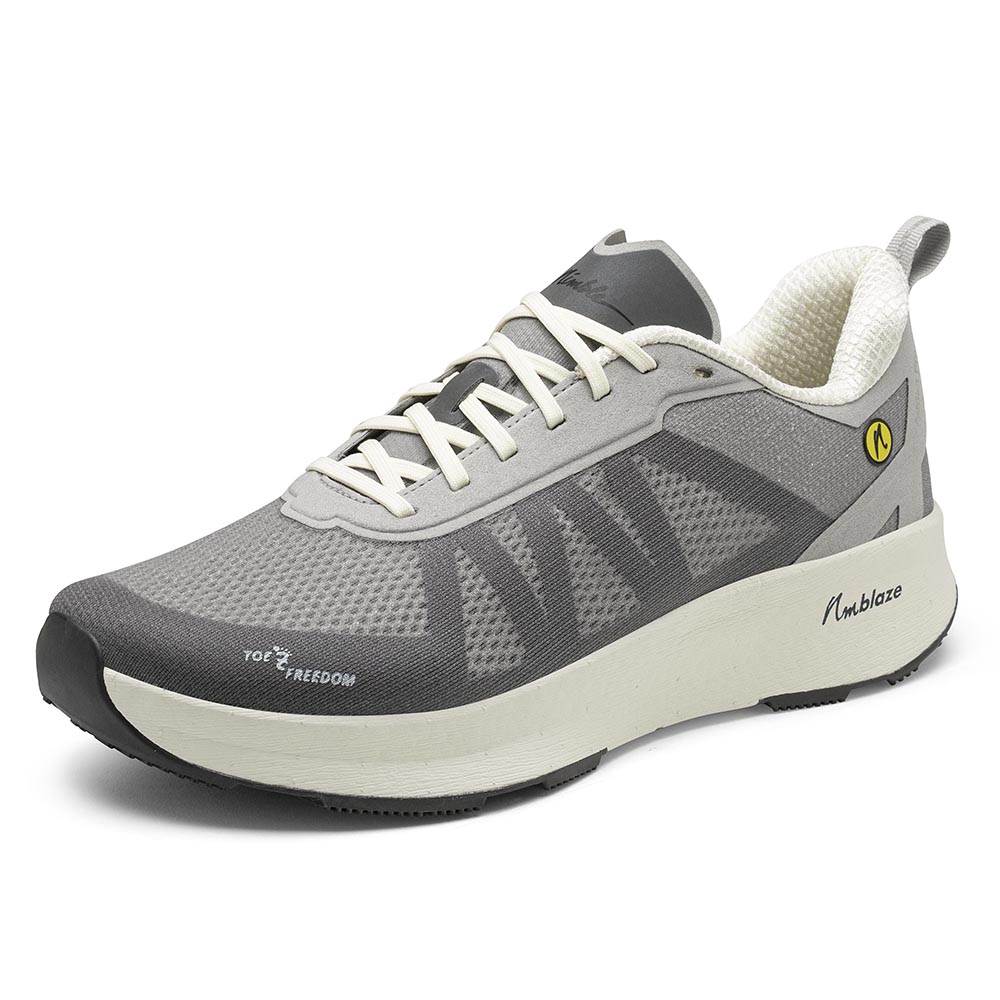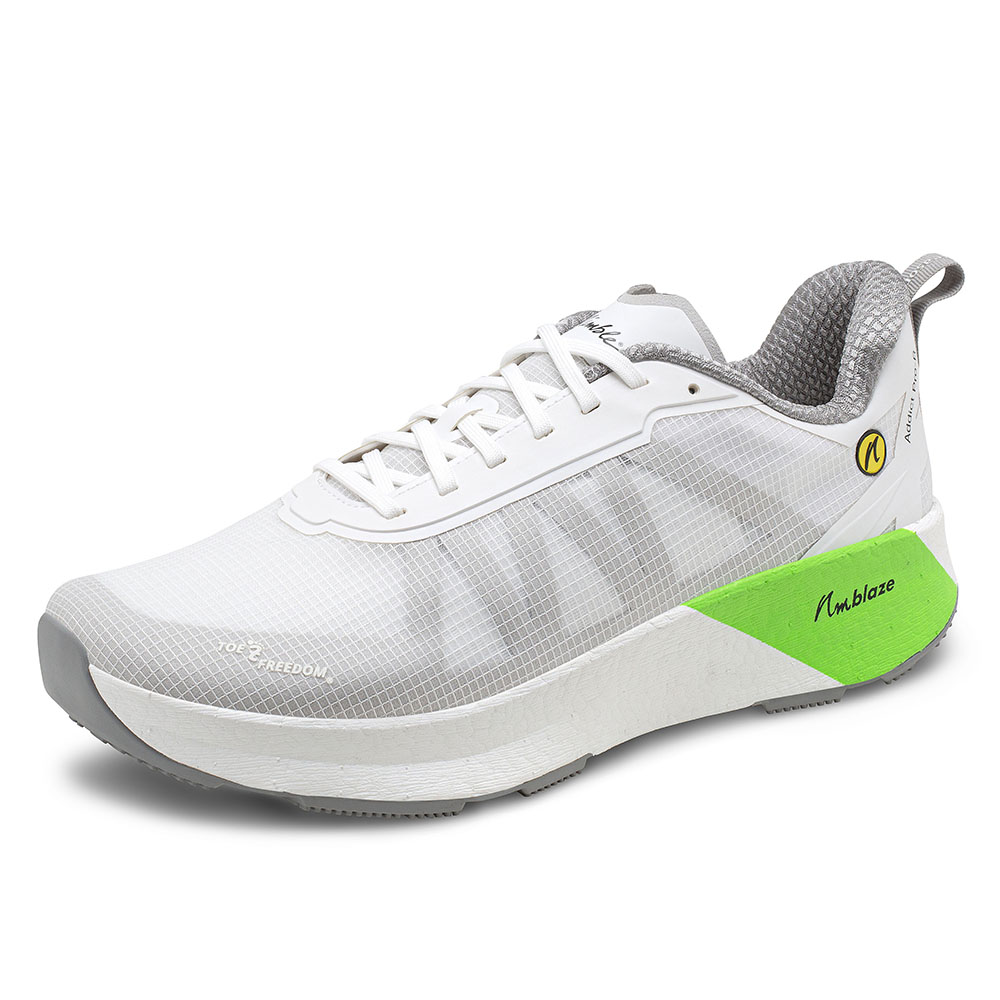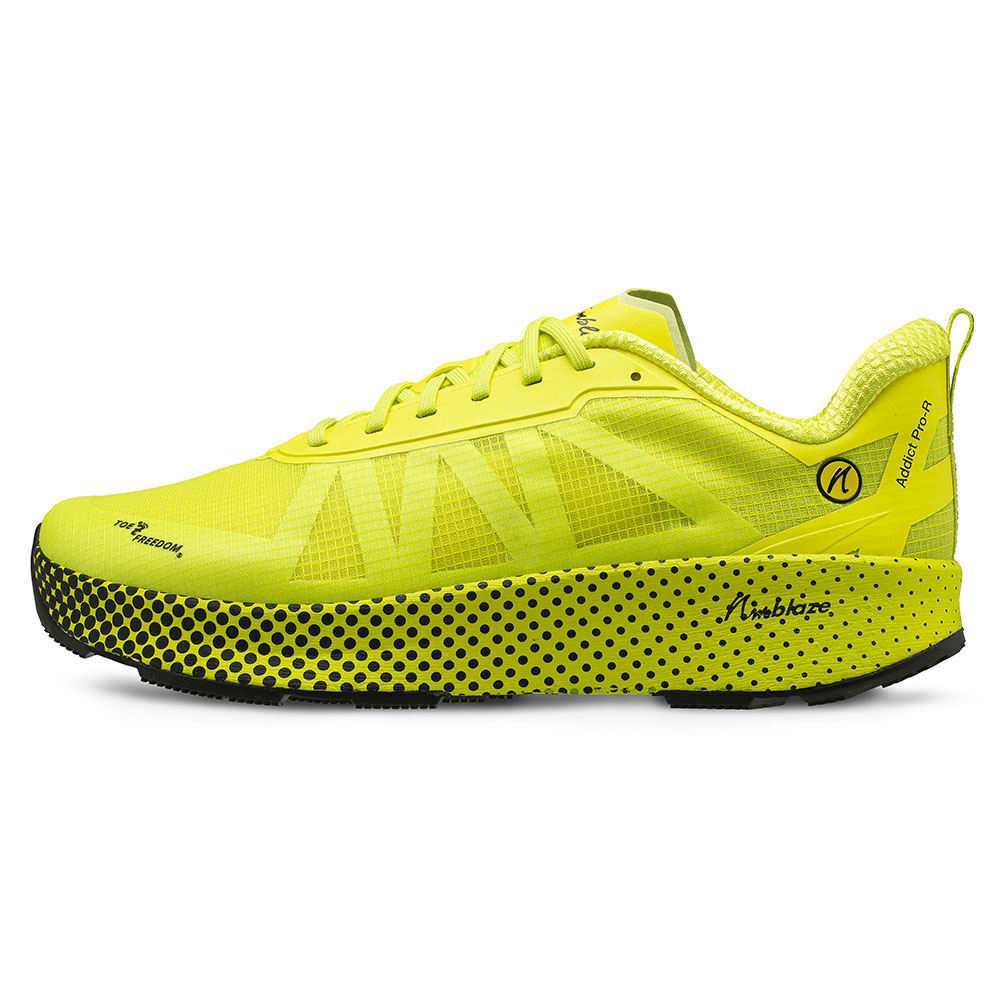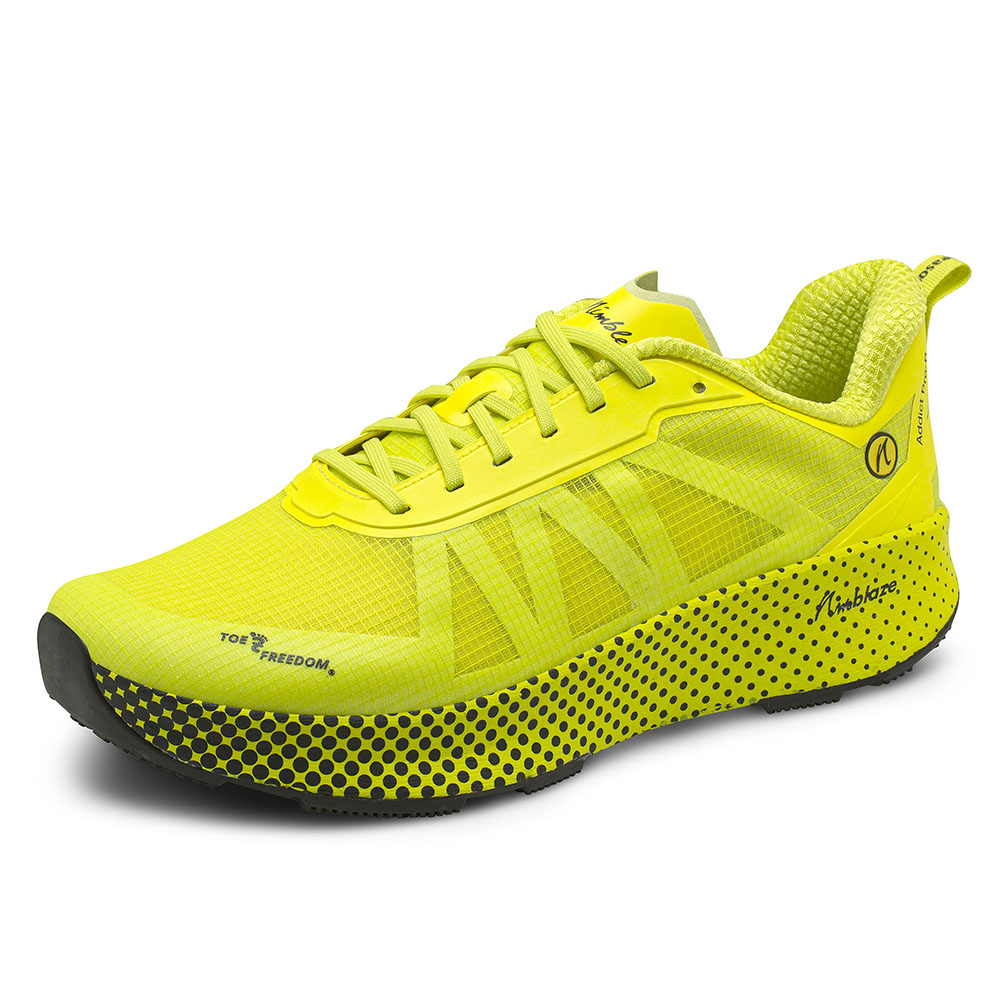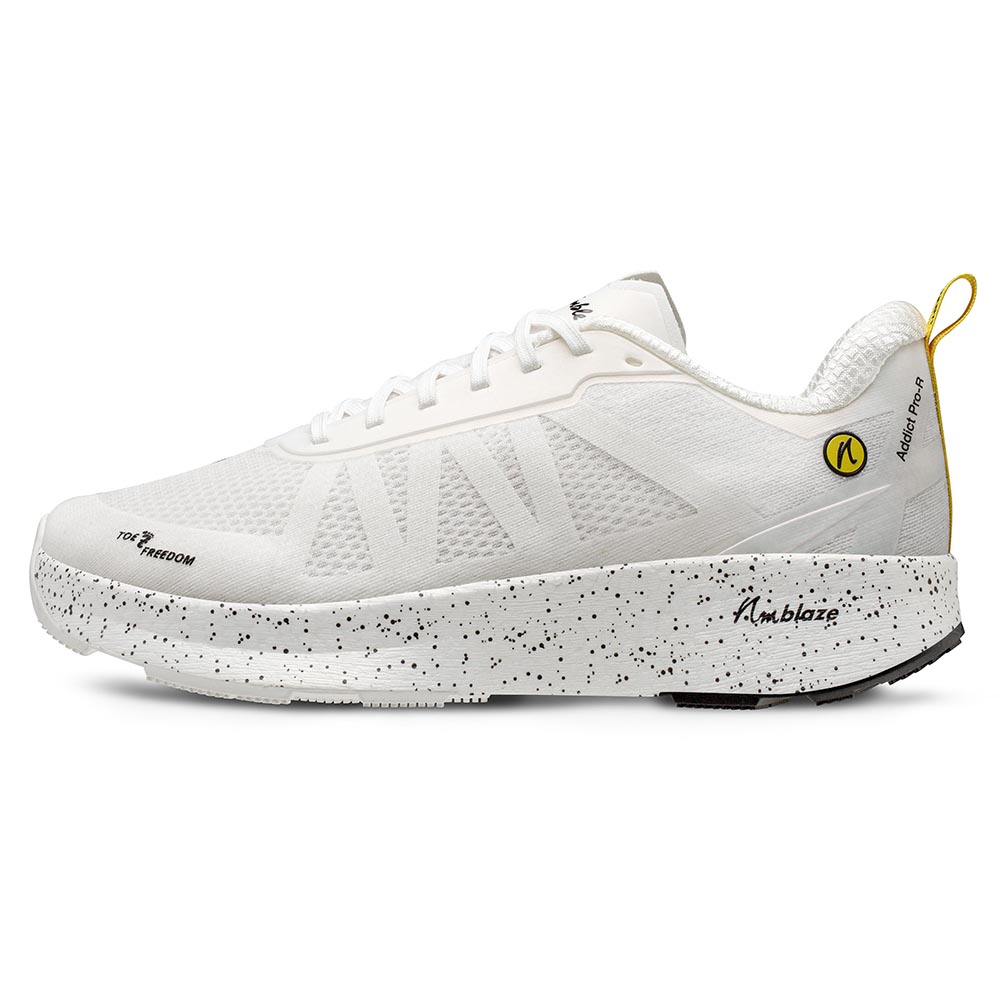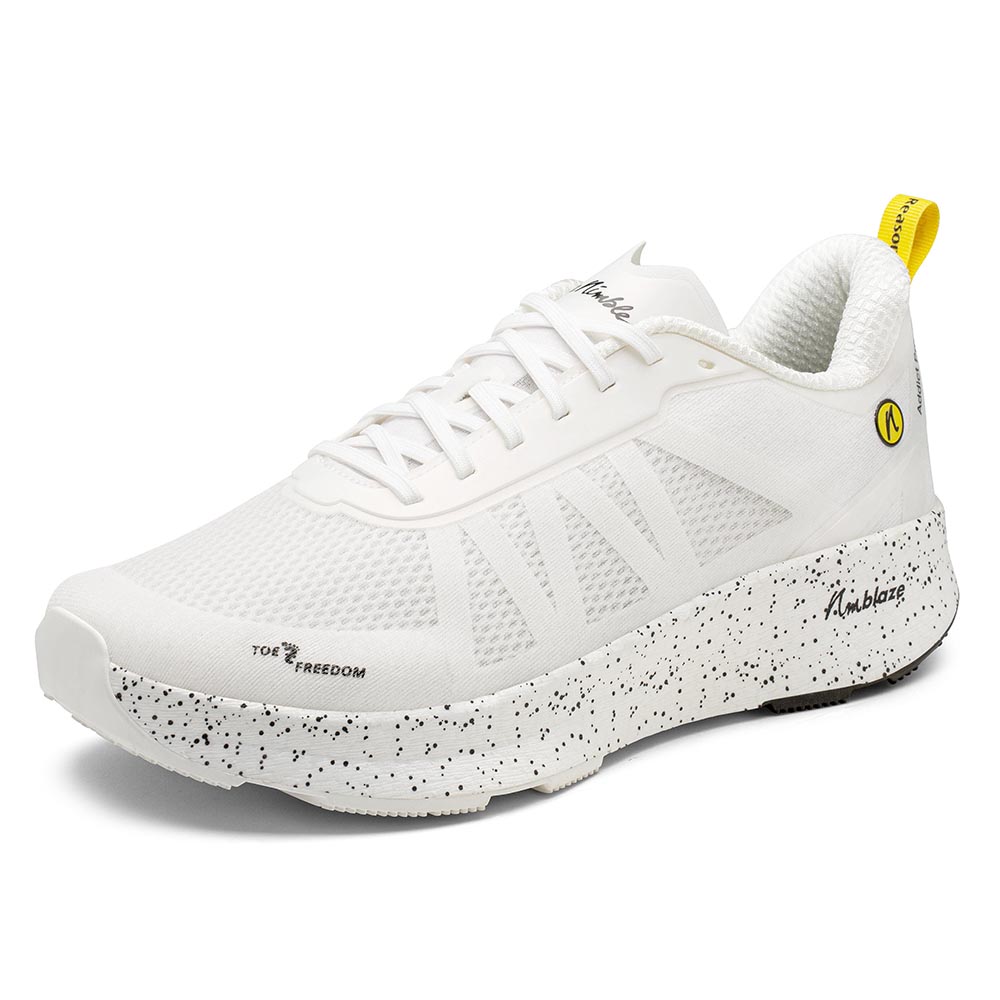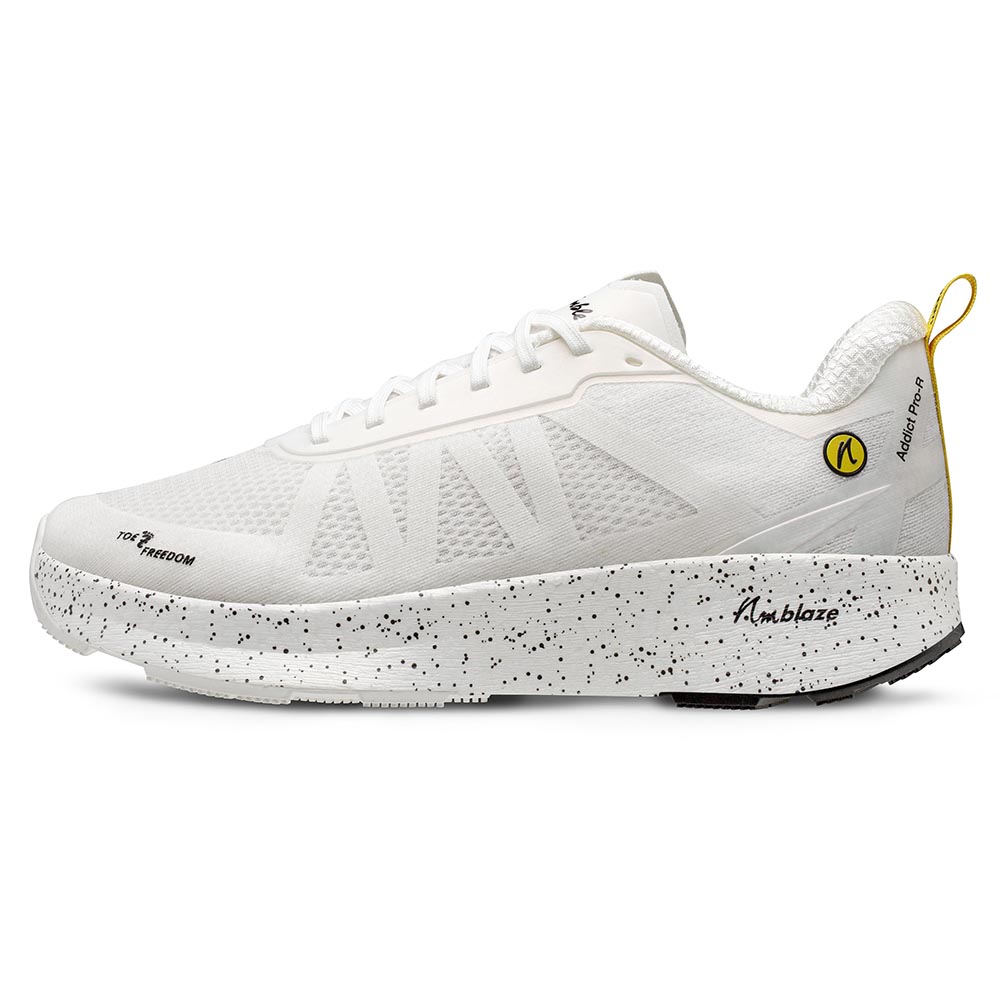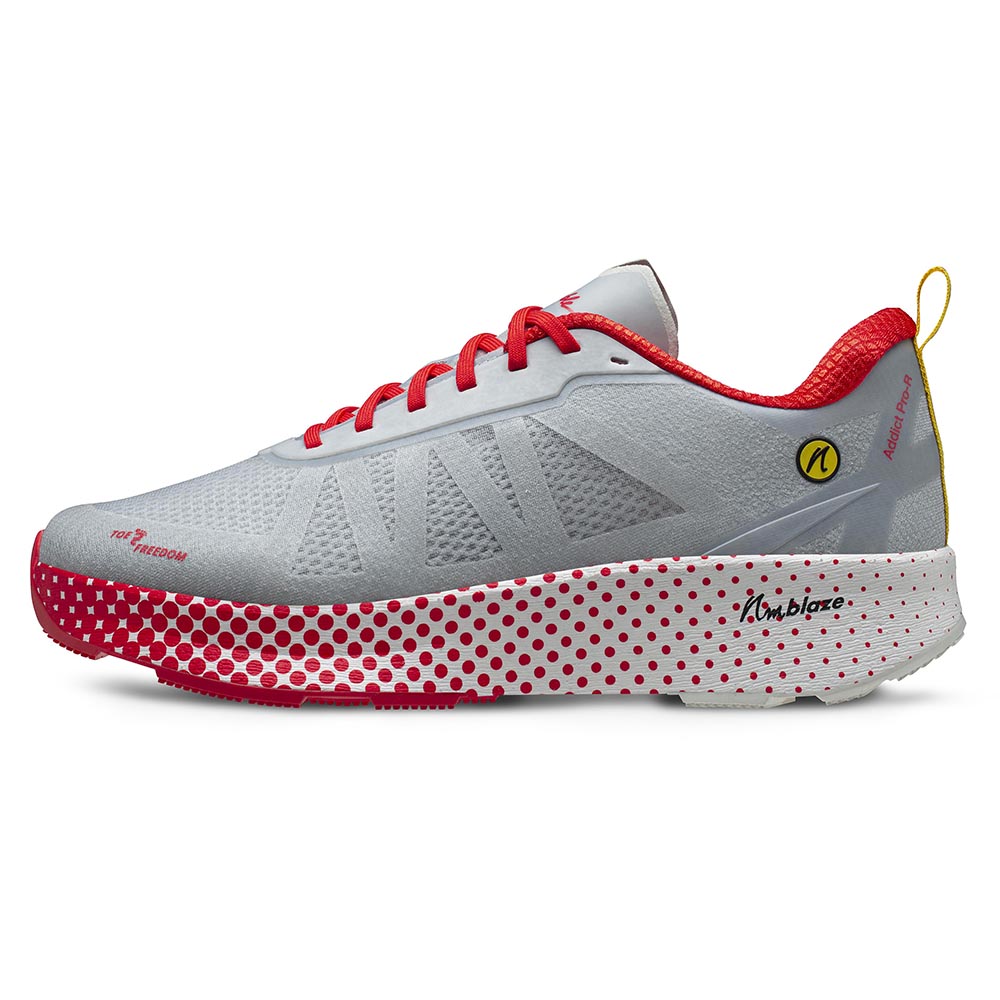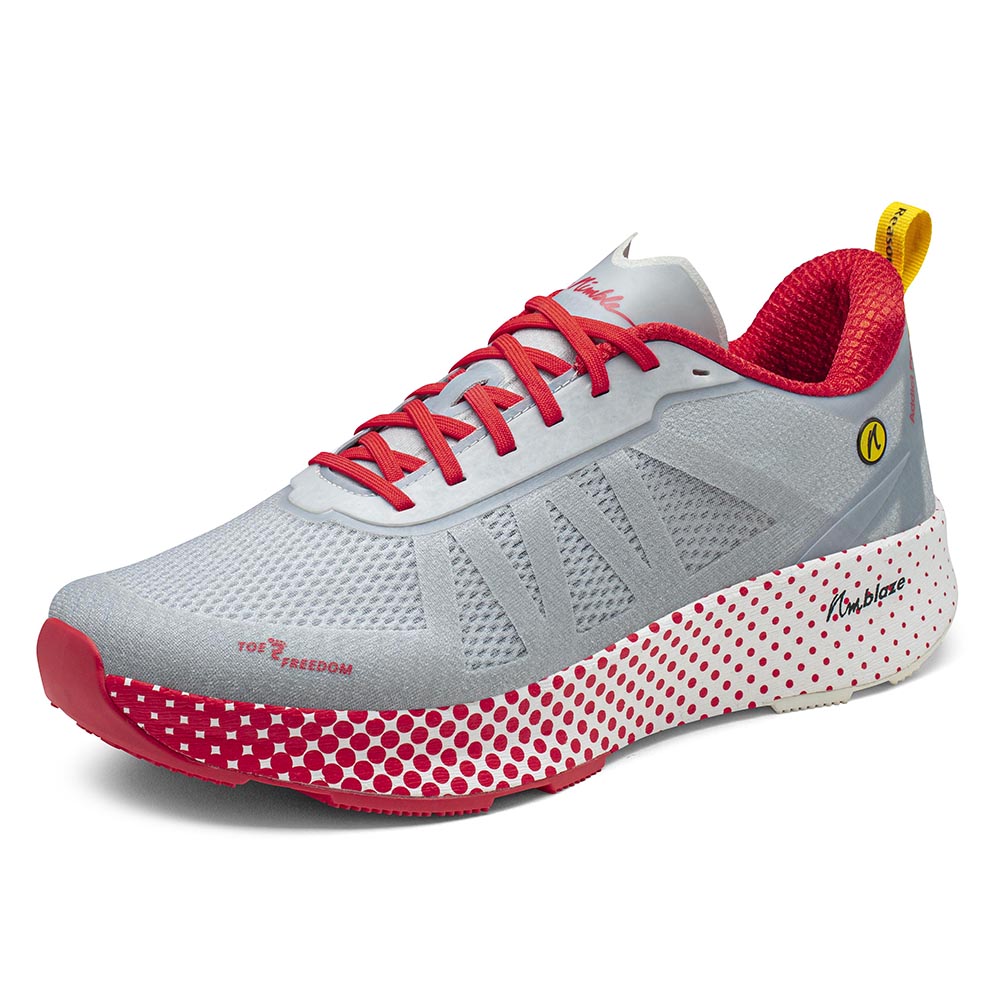Foot dysfunction and cure part 4
"Compromised foot structure is a major factor in chronic musculoskeletal pain throughout the body." (Janet Travell, 1993)


Footprint of the "decompensated" shoe-shaped foot.
Due to the shoe-shaped forefoot structure, there is a high pressure on the medial edge of the first metatarsal head and the big toe when leaning inward (Doxey, 1985, Fig. 5).

Footprint of the "compensated" shoe-shaped foot.
Due to the shoe-shaped forefoot structure, there is a high pressure on the lateral and medial metatarsal heads when leaning outward (Doxey, 1985, Fig. 5).
People with the first footprint often suffer from knee injuries. Those with the second footprint suffer from fatigue fractures and ankle sprains (Williams, McClay, and Hamill, 2001). Trigger point pain in the lower legs, upper legs, hips, and even trunk and neck is also common as the body attempts to compensate for the unstable foot (Travell and Simons, 1993).
To restore stability to foot function, the forefoot structure must be restored. Fortunately, the plasticity that allowed the development of shoe-shaped feet also allows the restoration of foot structure and thus foot function (Knowles, 1953).
The therapy is simple:
- Wearing foot-shaped (functional) shoes in which the toes have room to spread and the foot can widen and flatten, and
- Loading the feet with body weight to allow a force to act to stimulate restoration of foot shape and function.
References
- Chou S, Cheng HK, Chen J, Ju Y, Wong MA: The role of the great toe in balance performance. Journal of Orthopaedic Research. 2009; 27:549-54.
- Doxey, GE: Management of metatarsalgia with foot orthotics. The Journal of Orthopaedic and Sports Physical Therapy. 1985; 6(6): 324-333.
- Knowles, FW: Effects of shoes on foot form: An anatomical experiment. Medical Journal of Australia. 1953; 1: 579-581.
- Munteanu SE, Menz HB, Wark JD, Christie JJ, Scurrah KJ, Bui M, Erbas B, Hopper JL, Wluka AE: Hallux valgus, by nature or nurture? A twin study. Arthritis Care & Research. 2017; 69: 1421-1428.
- Nix S, Smith M, Vicenzino B: Prevalence of hallux valgus in the general population: a systematic review and meta-analysis. Journal of Foot & Ankle Research. 2010;3:21.
- Plank M: The pattern of forefoot pressure distribution in hallux valgus. The Foot. 1995; 5(1):8-14.
- Travell JG & Simons DG. Myofascial Pain and Dysfunction:The Trigger Point Manual. Baltimore: Lippincott Williams & Wilkins; 1993.
- Williams, DS, McClay, IS, Hamill, J: Arch structure and injury patterns in runners. Clinical Biomechanics. 2001; 16: 314-347.
- Yavuz M, Hetherington VJ, Botek G, Hirschman GB, Bardsley L, Davis BL: Forefoot plantar shear stress distribution in hallux valgus patients. Gait and Posture. 2009; 30(2):257-9.

